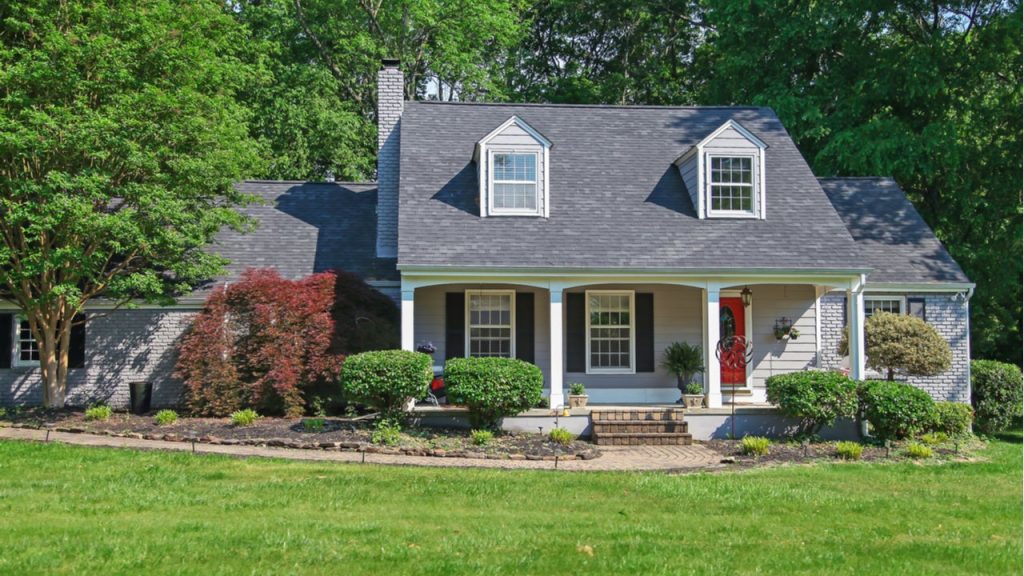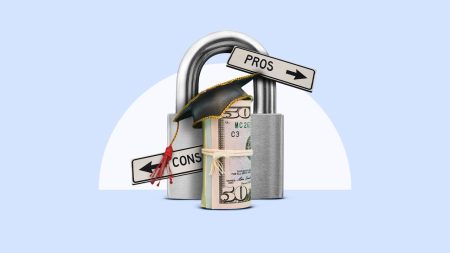eakkarat rangram/Shutterstock
Key takeaways
- A mortgage origination fee is a charge you pay at closing to cover the cost of processing and funding your home loan.
- Usually, an origination fee is about 0.5 to 1 percent of the loan amount.
- There are ways to save on an origination fee, including shopping around to compare multiple loan options, negotiating with a lender and asking the seller to cover the cost.
What is a mortgage origination fee?
A mortgage origination fee is a fee that most lenders charge for originating, or creating and processing, your home loan. The origination fee can cover a number of services, including opening the loan, processing and underwriting. This fee is one of the ways lenders make money.
Your lender generally breaks down the expenses that go into the origination fee on your loan estimate under the “Origination Charges” section.
How much is a loan origination fee?
The origination fee on a mortgage is typically 0.5 percent to 1 percent of the amount you’re borrowing. If you borrow, say, $300,000, for example, that would equate to an origination fee between $1,500 and $3,000.
Let’s take a look at hypothetical loan origination charges at various price points:
| Borrowed amount | Loan origination fee (0.5 percent to 1 percent of borrowed amount) |
|---|---|
| $200,000 | $1,000 to $2,000 |
| $300,000 | $1,500 to $3,000 |
| $400,000 | $2,000 to $4,000 |
| $500,000 | $2,500 to $5,000 |
| $600,000 | $3,000 to $6,000 |
Along with the fee itself, your loan estimate might also list mortgage origination fee add-on charges. You’ll find all these expenses on your loan estimate in the top section (“Origination Charges”) of the second page.
For example, you might see total origination charges at $1,140, broken down as:
- Courier fee: $25
- Document preparation fee: $200
- Processing fees: $395
- Tax service processing fee: $85
- Underwriting fees: $435
When do you pay the origination fee?
You’ll typically pay the mortgage origination fee, along with your down payment and other closing costs, when you close your loan — and your home purchase.
Your lender will tell you how much money you’ll need to provide in the form of a cashier’s check, wire transfer or other secure payment method, and you’ll see a total breakdown of all fees and other charges on your closing disclosure, which you’ll receive at least three days prior to the closing.
Many lenders allow borrowers to roll closing costs, including the origination fee, into their loan. This might be an appealing option if you don’t have enough cash on-hand to pay these costs and your down payment and all the other expenses (moving, etc.) that come with a new home. These loans are often marketed as “no-closing-cost mortgages” — a name that’s somewhat misleading. It’s not that you have no closing costs; it’s just that you don’t pay them on closing day, but over the life of your loan.
Money tip
While you avoid a big bite upfront, you often end up paying more in interest overall with no-closing-cost mortgages. Either your lender will impose a higher interest rate on the loan, or a greater amount of interest will accrue on the principal, because it’s been enlarged by the fees rolled into it. Either way, your monthly payments will be higher.
How to pay loan origination fees
When it comes time to pay your loan origination fees, you have a few different options.
- Direct payment at closing: The day your mortgage and home purchases closes, simply write a check or arrange for an electronic payment/wire transfer to cover the fees.
- Mortgage payment: You can also roll the loan origination fees into your mortgage — they are simply added to the principal amount of your loan. You begin paying them when your monthly payments start. It is a great option if you do not want an upfront expense, but prefer to pay over time.
- Seller’s concession: You can negotiate for the home’s seller to cover some or all of your closing costs, including the origination fees. Since it’ll come out of the sale proceeds, sellers sometimes prefer to make this sort of concession, rather than pay for big repairs or drop the asking price — or if they’re just eager to do the deal.
- Assistance programs: Many homebuyer assistance programs — generally run by federal, state or local authorities — offer help for the cash portion of your home purchase, like closing costs, including your mortgage origination fee. Depending on your income and the program, the assistance may be an outright grant, or it could be a low-cost or forgivable loan.
- Manufacturer incentives: If you’re buying new construction, the builder and developer may offer incentives to close the deal or get you to finance through them. These enticements can include credits towards your origination fees.
- Lender credits: Similarly, your lender may offer lender credits that can be applied to your mortgage’s origination fees (and other closing costs). However, the interest rates on these mortgages often run higher than on other types of mortgages; the more you get in credits, the more interest you pay.
- Lender discounts: Sometimes, you can negotiate with your lender to lower or even remove loan origination fees. Not all lenders will oblige, so it’s something to consider and ask about when shopping around for loans.
With some of these options, it’s important to weigh the potential drawbacks against the benefits. With lender credits, for instance, think about how long you’ll stay in the home and how much the higher rate will cost you compared to how much you’re saving upfront.
How to save on loan origination fees
If you’re hoping to reduce your upfront costs when buying a home, here’s a look at some ways to reduce — or even completely eliminate — the origination fee.
- Compare lenders that don’t charge origination fees: When you’re shopping around for loan options, be sure to include mortgage lenders that don’t charge origination fees in your search. These typically include lesser-known lenders such as credit unions and online-only banks.
- Ask about discounts: If you already have a relationship with a bank or credit union — a checking, savings or investment account, for example — they may have a program that offers reduced origination fees for mortgages and other loans.
- Look at flat-rate origination fees: Instead of looking at lenders that charge origination fees based on a percentage of the loan amount, see if you can find a lender that charges a flat fee regardless of the loan amount. If you’re buying a higher-priced property, that flat rate may be much lower than 1 percent of the amount you need to borrow.
- See if you can get the seller to cover part of it: Talk to a real estate agent about the current activity in the market to see if it’s possible to get a seller to cover all or a portion of your origination fee. This isn’t guaranteed, but some sellers have been agreeing to more concessions lately to avoid letting a deal fall through.
- Negotiate with your lender: Lenders want your business, so they may be willing to bargain with you on the fee — especially if you can show them a more compelling offer from a competitor.
Don’t let the upfront origination fee cloud the full picture of the cost of your loan. If a lender doesn’t charge an origination fee, there may be a tradeoff, such as paying a slightly higher interest rate. Be sure to do the math to make sure you’re working out the best deal possible.
Origination fee FAQs
Why we ask for feedback
Your feedback helps us improve our content and services. It takes less than a minute to
complete.
Your responses are anonymous and will only be used for improving our website.
Help us improve our content
Read the full article here









